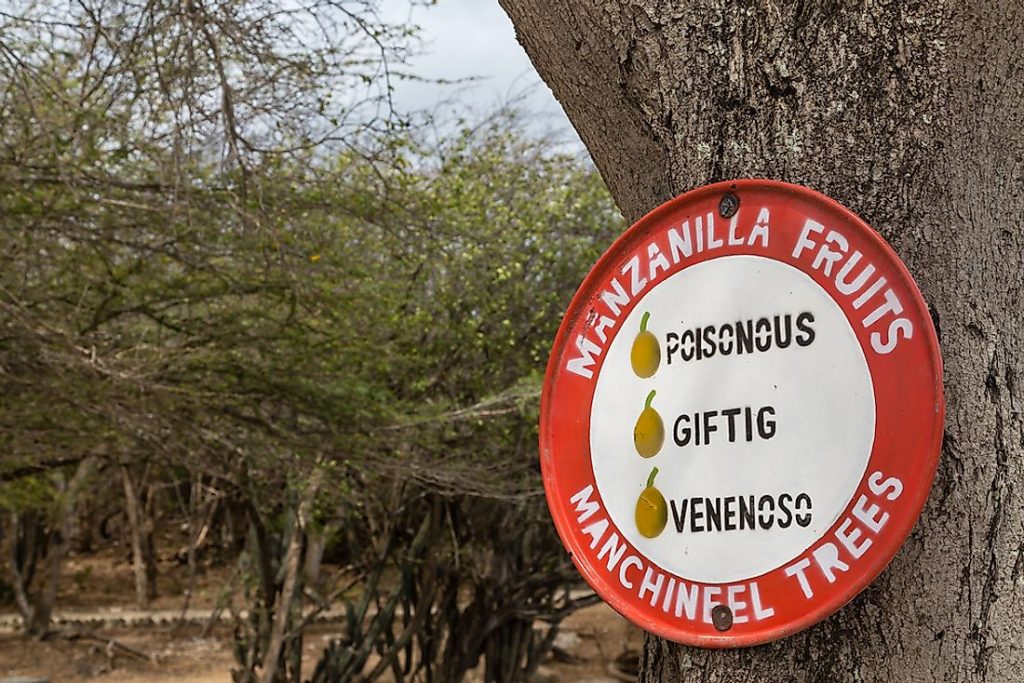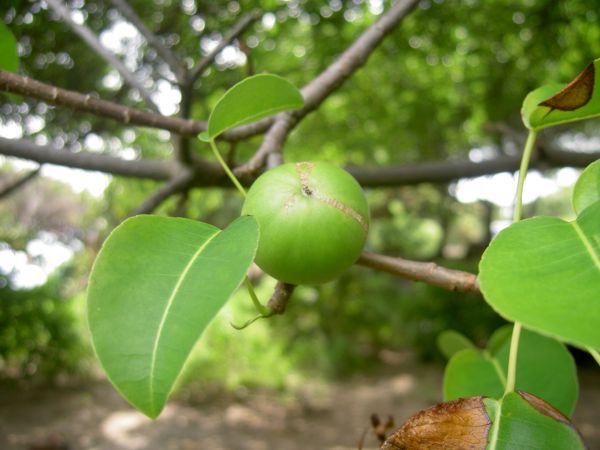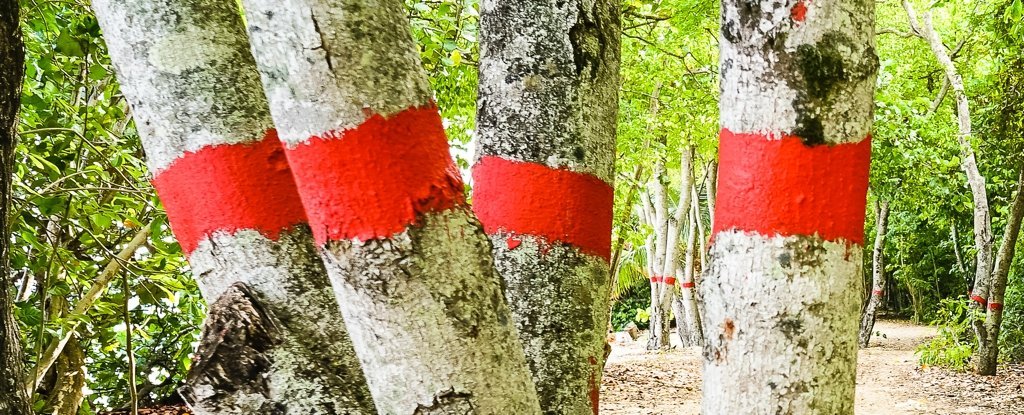During your travels, you’ve probably seen trees with cautionary signs and a bright red band painted around their trunks to warn all passers-by. These signs indicate some of the world’s most deadly plant species. The manchineel tree is one toxic plant you should be aware of.
The manchineel (Hippomane Mancinelli) is native to tropical areas of southern North America, including South Florida, northern Central and South America, and the Caribbean. The plant gets its name from the Spanish word manzanilla, which means “little apple,” because its fruit and foliage look like apple trees.

The manchineel is a tropical plant with bright green leaves and round, yellowish-green fruits that belongs to the Euphorbia genus. But don’t be fooled: every part of manchineel is poisonous. “Interaction with and ingestion of any part of this tree may be lethal,” according to the Florida Institute of Food and Agricultural Sciences.
The fruit, as well as the sap from the leaves and stems, is poisonous. The irritants in manchineel sap can cause skin inflammation and painful blisters when touched. When it is raining, passers-by are advised to avoid standing beneath the tree because dripping water can transfer toxins from the tree. Burning manchineel bark has also been known to cause irritation and even blindness due to poison ash in the air.

There have been multiple accounts of severe eye inflammation and even temporary blindness caused by inhaling the smoke of burning manchineel wood. Yet, for generations, Caribbean carpenters have used manchineel wood in furniture after cautiously cutting it and drying it in the sun to nullify the poisonous sap.

The manchineel is more common than you may think. It grows on tropical beaches and swamp forests, where it acts as a windbreak and helps to prevent erosion. If you’re in a region where the manchineel thrives, keep a close eye out for it. If you’re still not convinced, read this terrifying story about a manchineel encounter from the BJM medical journal.
Avoid this coastal plant if you come across one while exploring the mangroves; it’s one of the most dangerous tropical species on the planet, and it’s best to stay away from it.


